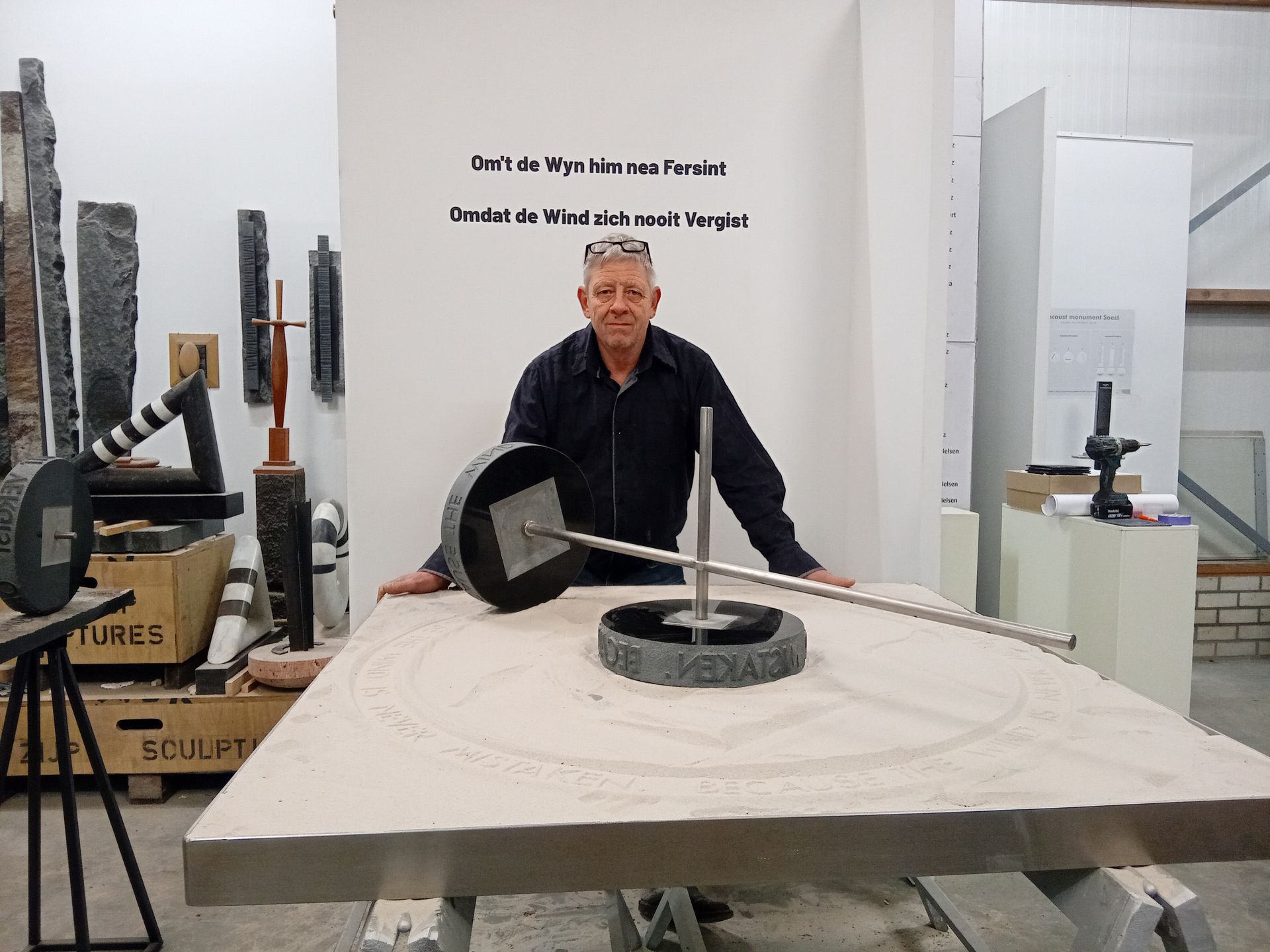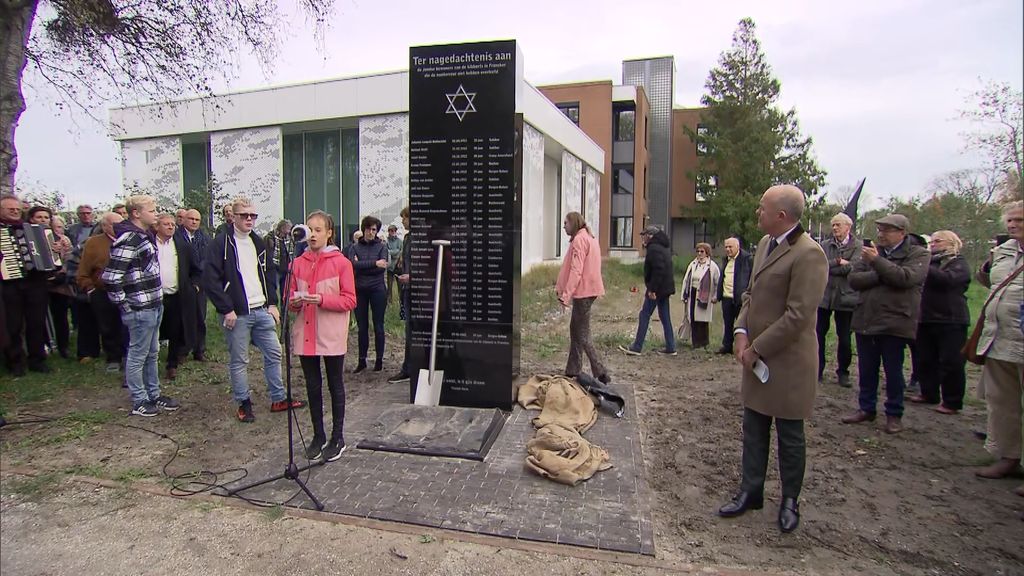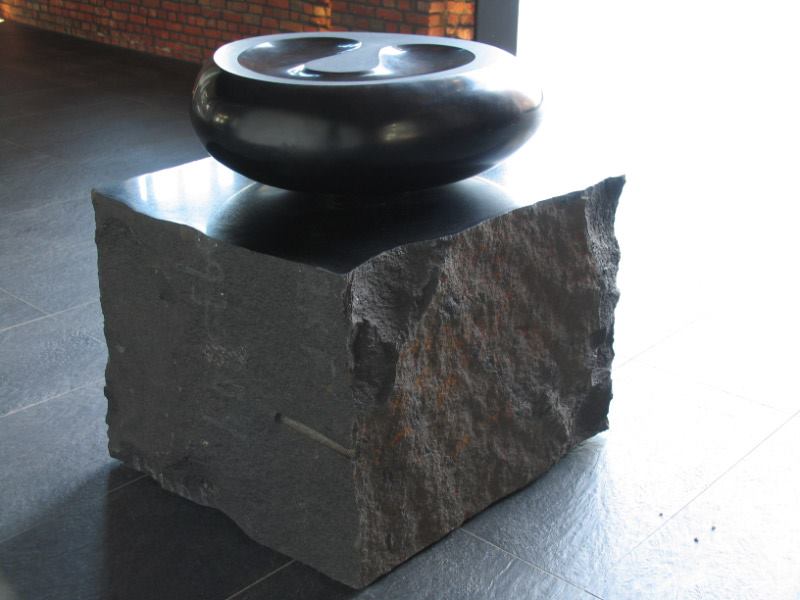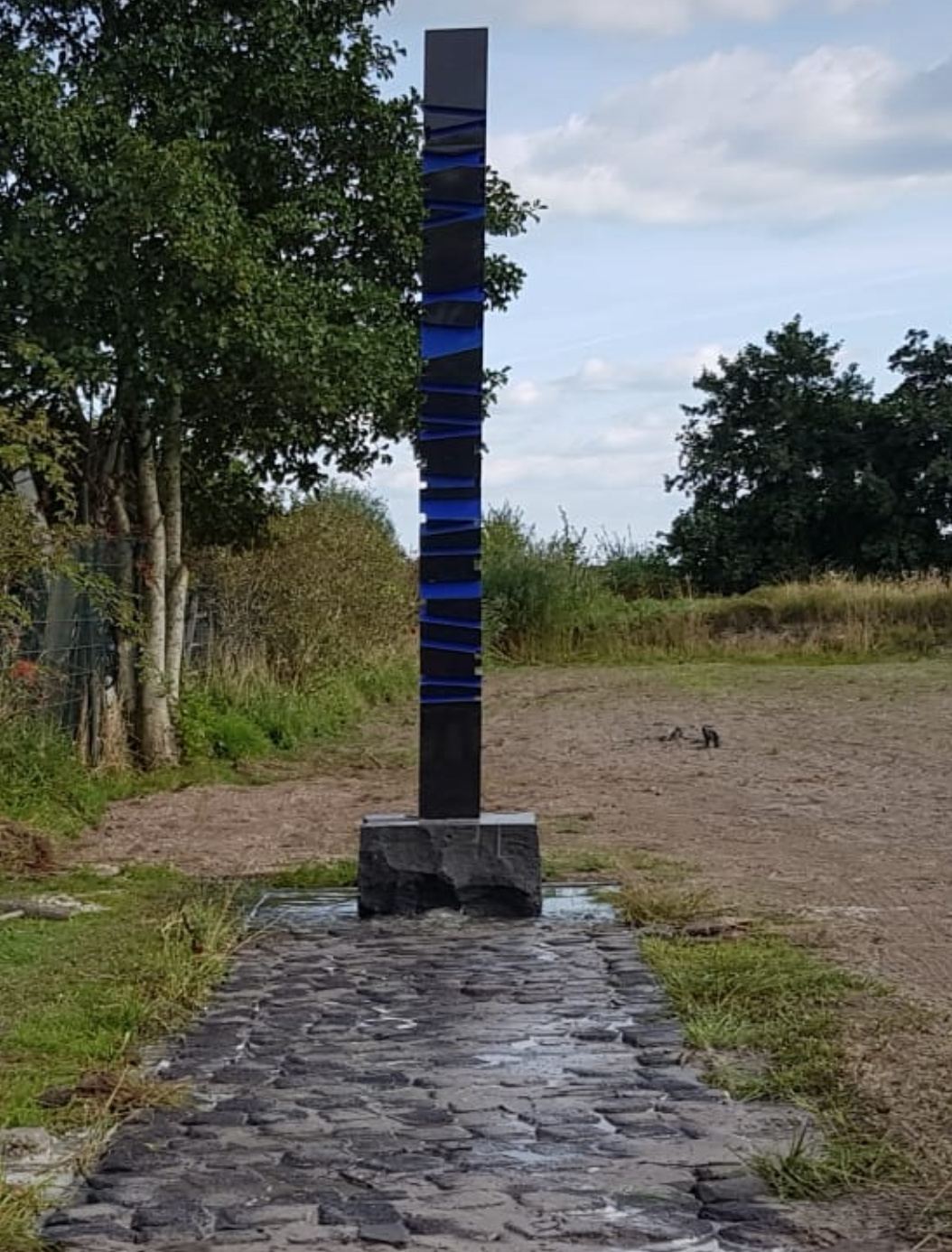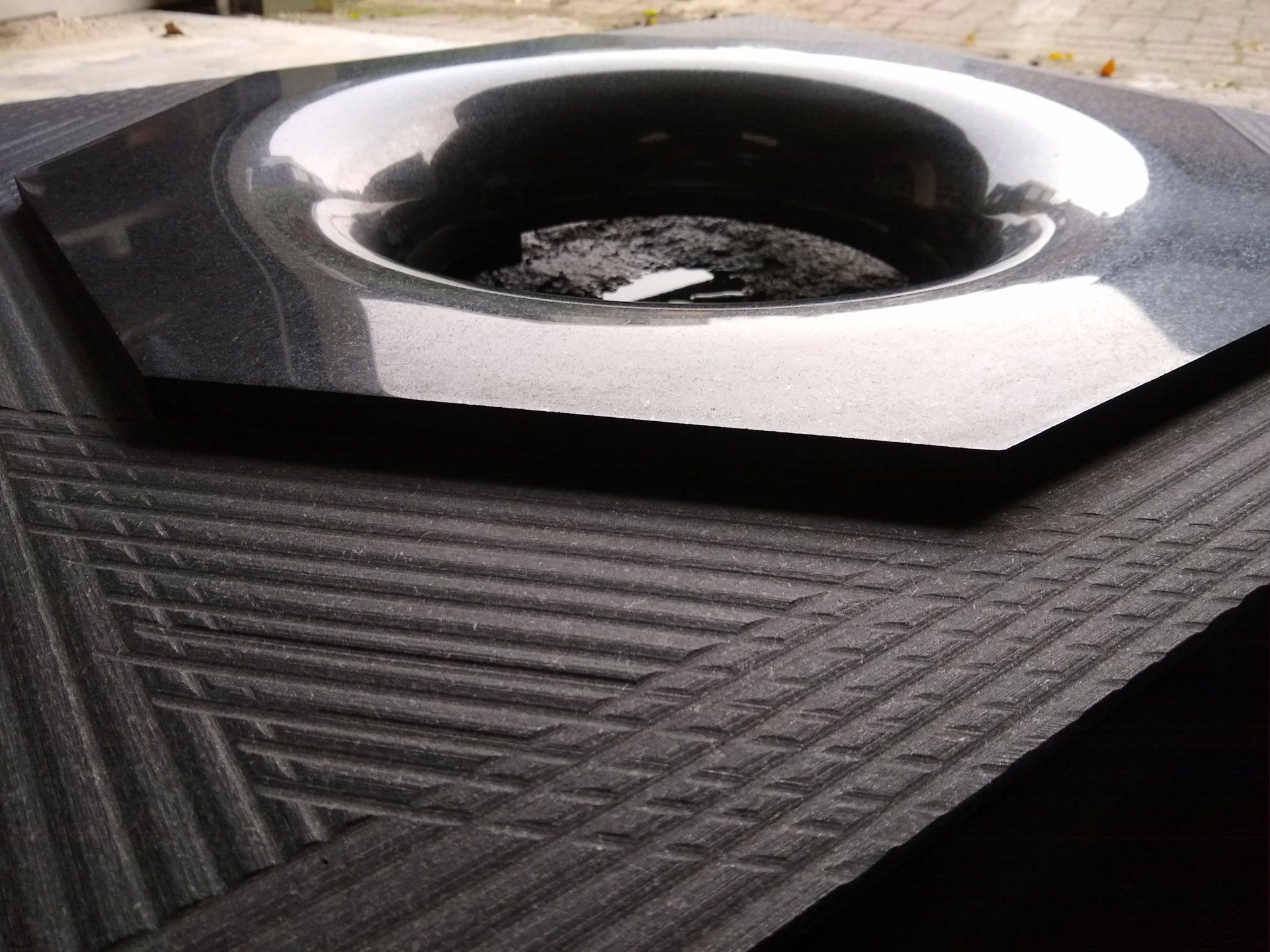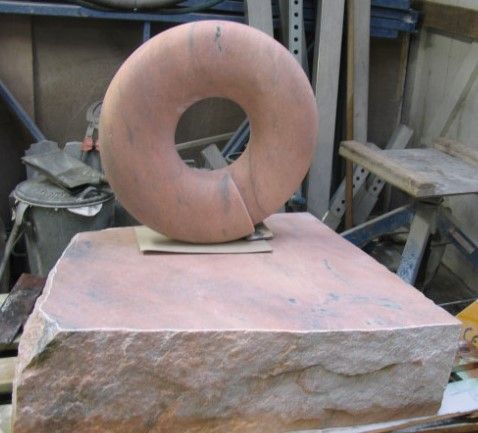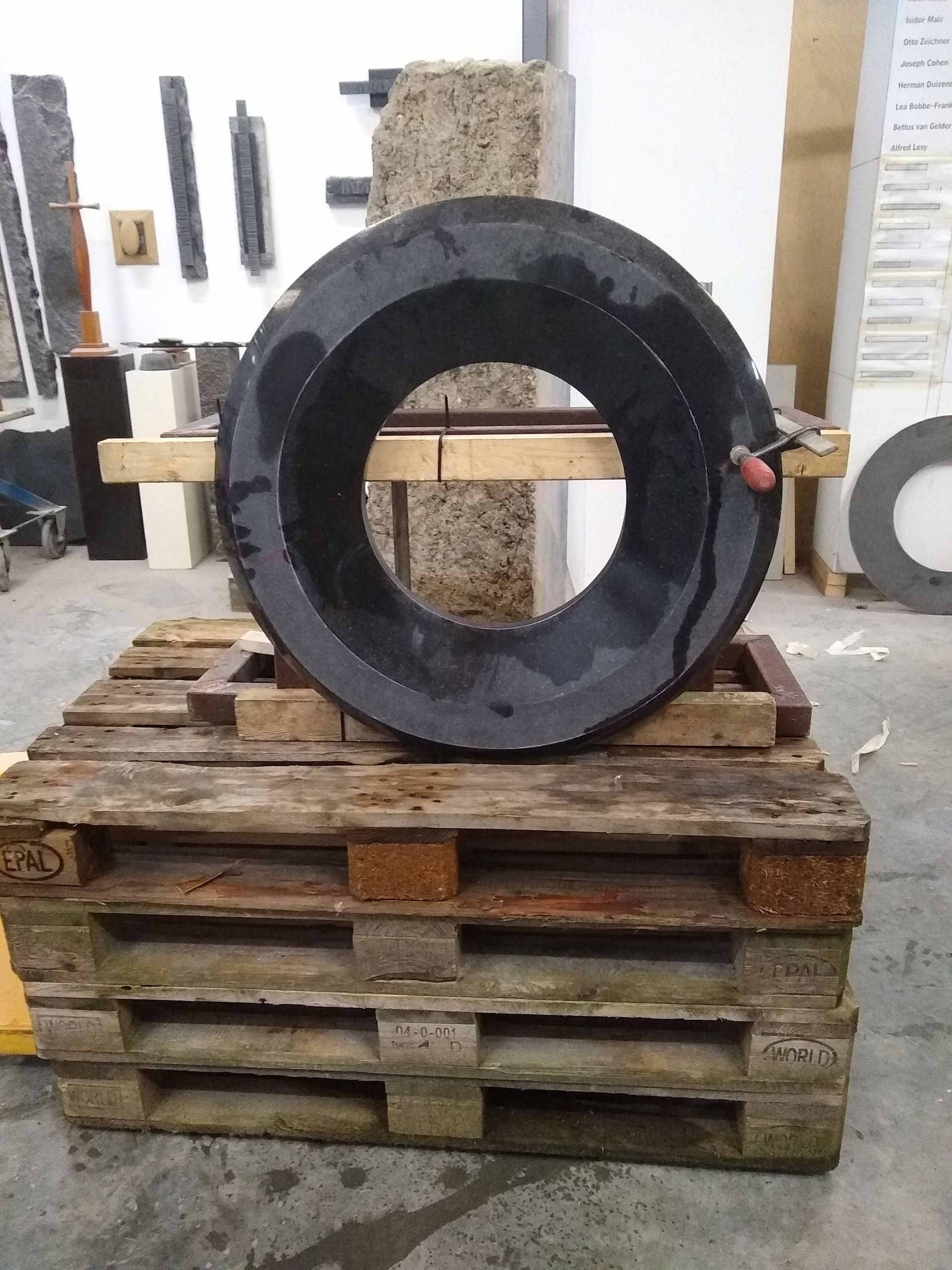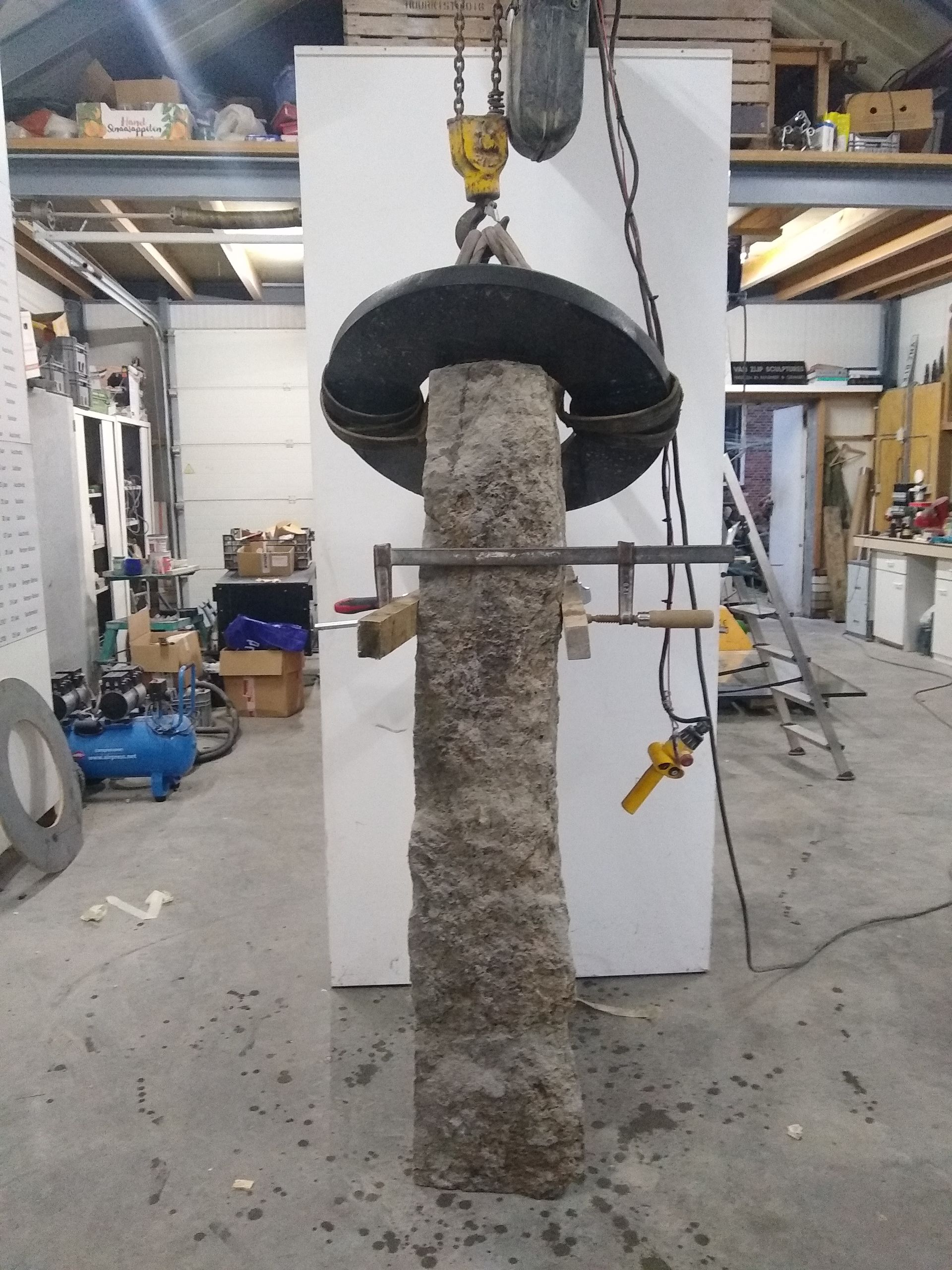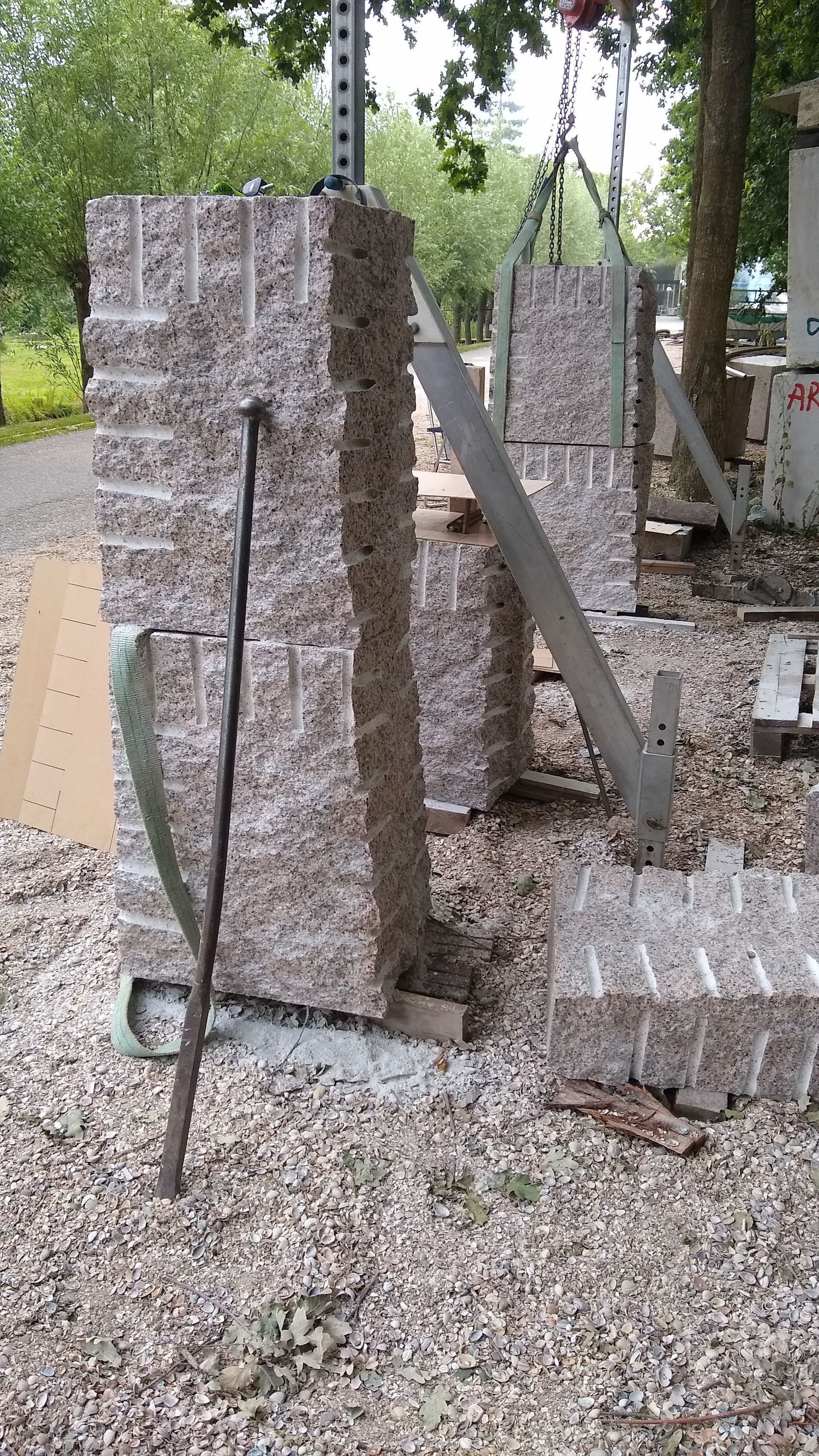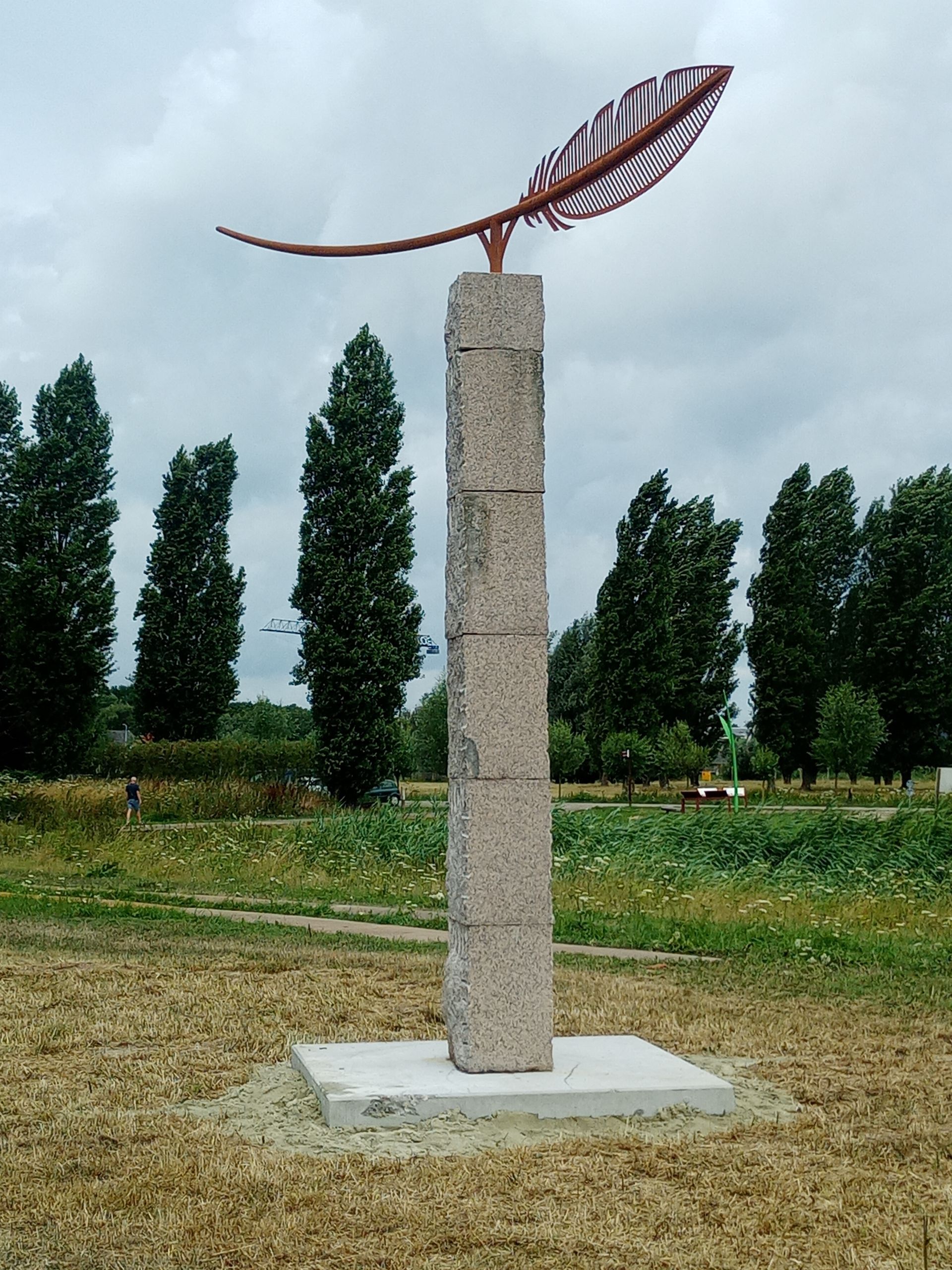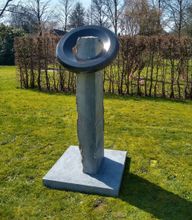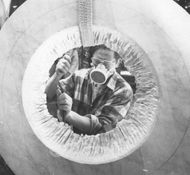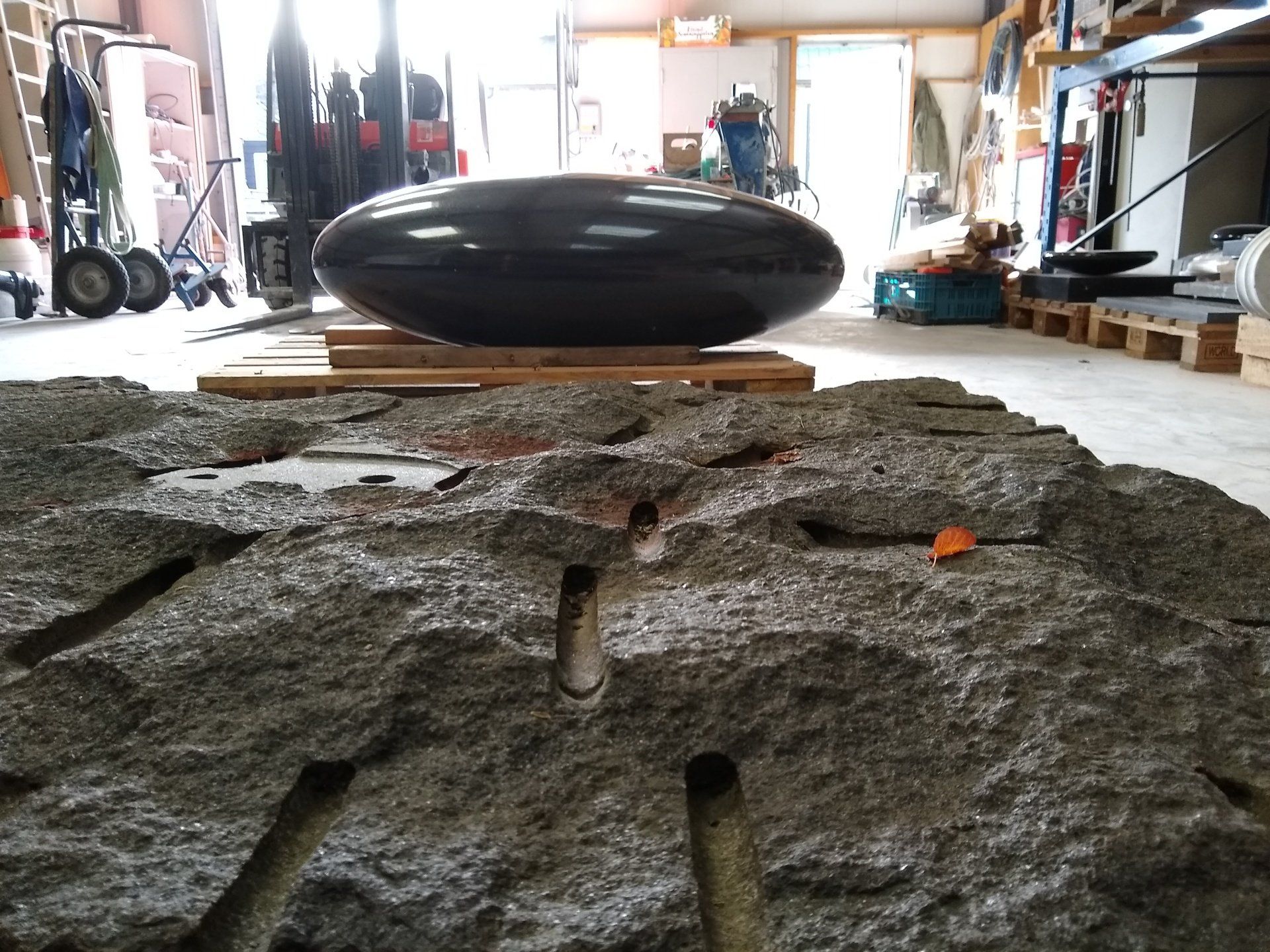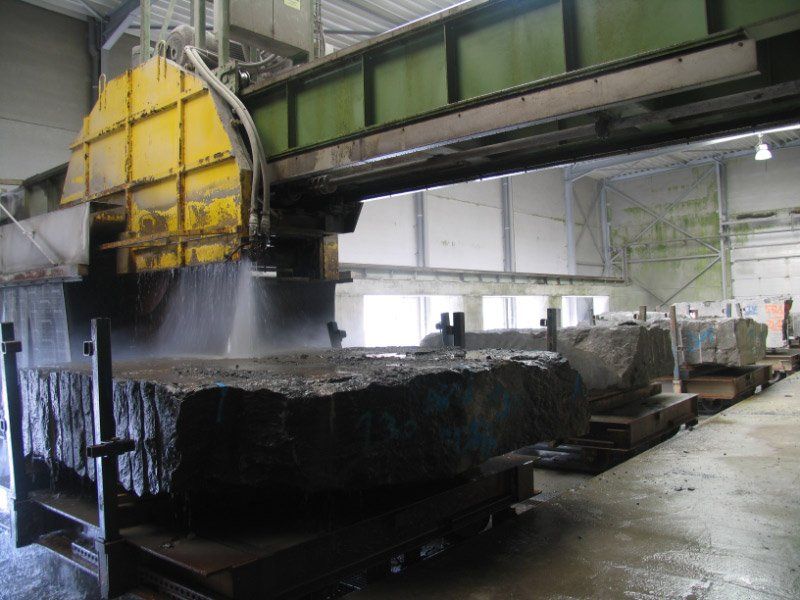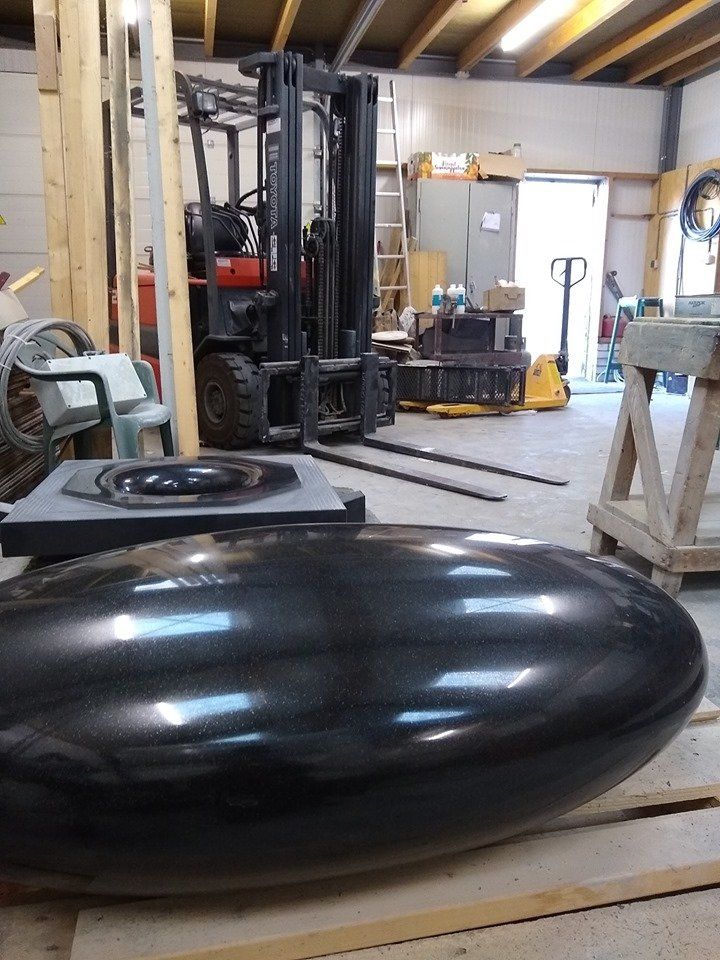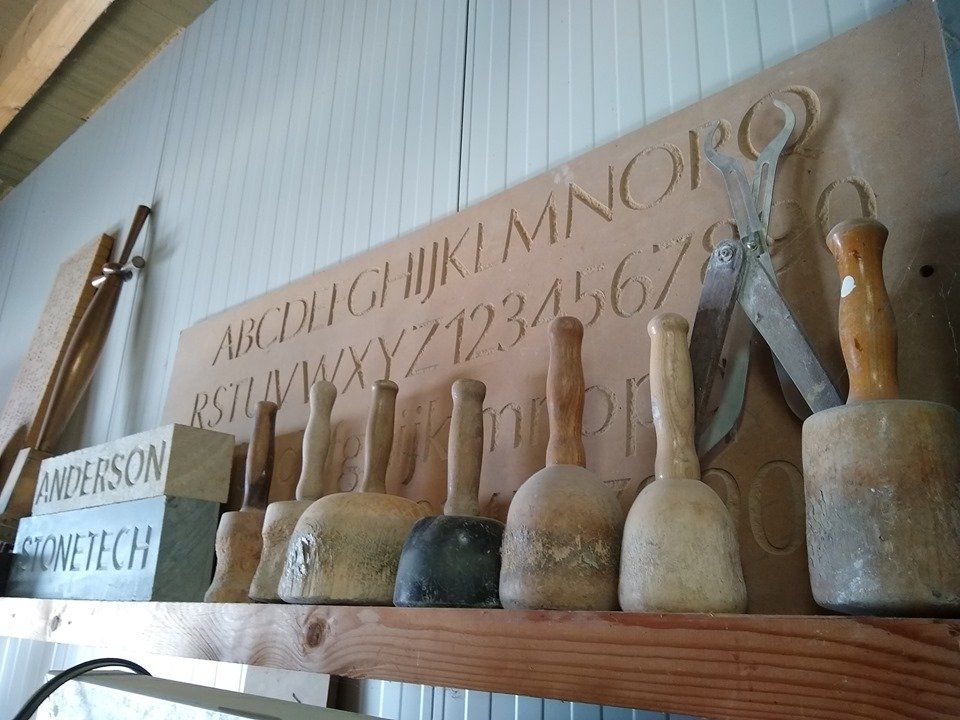Welcome at the website of Marcel van Zijp Sculptures!
As a stone sculptor Marcel Van Zijp (1958) is self-taught.
After training as a graphical artist, Van Zijp attended the Academy of Fine Arts of Psychopolis in The Hague.
From the mid-eighties onwards, Van Zijp made the transition to working in stone mostly due to the influence of Belgian singer/sculptor Willem Vermandere who taught him the technique of cleaving blocks of stone. Yet, unlike Vermandere, whose improvisational work was greatly influenced by the Cobra generation, Van Zijp always starts off with a detailed work plan.
The circle was a common motif in Van Zijp’s free work throughout the 1990’s, which was a period in which he mainly explored different types of stone, as well as carving techniques. The skin of his sculptures was often sanded or polished with the work itself subdued, and there was a discernible influence of sculptors like Constantin Brancusi and Isamu Nuguchi. Van Zijp was also an active freelance stone sculptor and text carver, developing an extended experience in processing stone from the early ’90s onward. Then in 2001 he moved from The Hague to Wouwse Plantage in West Brabant, investing in a house with studio and sculpture garden with his partner, Rene Sampiemon.
In the New Millennium Van Zijp’s sculptures have become even more monumental. Besides working in the softer limestone types of stone, rock-hard granite stone is now one of his favourites – his overall sculpting becoming less inhibited. In 2003 Van Zijp created two large stone sculptures, entitled “Aspidium Filixmas”, in marble and granite. These were exhibited at the summer exhibition “Transmissie” put on by the art foundation Hazart in Soest. Its catalogue reads: “The purity of the carved spiral shape can match that of the fern. With great technical skill released of the stone, the statues present themselves to the viewer with proud, poetic allure.”
A second turning point in Van Zijp’s work took place in 2008 when he was invited by the conceptual artist Hans van Houwelingen to realise an update of his design for the Lorentz Monument. This would be for the Sonsbeek exhibition 2008, entitled “Grandeur”. For this project Van Zijp and a colleague carved 147 names of scientists -all Nobel laureates- in the wall of the monument. In that same year Van Zijp was also selected to participate in the Sculpture Symposium in Sprimont, Belgium, where he found in the quarry of Sprimont a rough Kroet plate of Belgian blue-stone that he only partly modified and finely sanded.
In total Marcel Van Zijp has now completed 25 meters of text from the song “Erstarrung” by Schubert, making this his first major text-sculpture where text is an integral part of the piece. More text sculptures will follow with texts by poets, such as Rainer Maria Rilke. Thus, the graphical artist has re-discovered himself in sculpture.
Graniet sculpturen
Foto door: John Doe
Ontdek mijn tekst sculpturen
Tekst sculpturen
Foto door: John Doe
Ontdek mijn tekst sculpturen
Public space
Foto door: John Doe
Ontdek mijn tekst sculpturen
Exhibitions
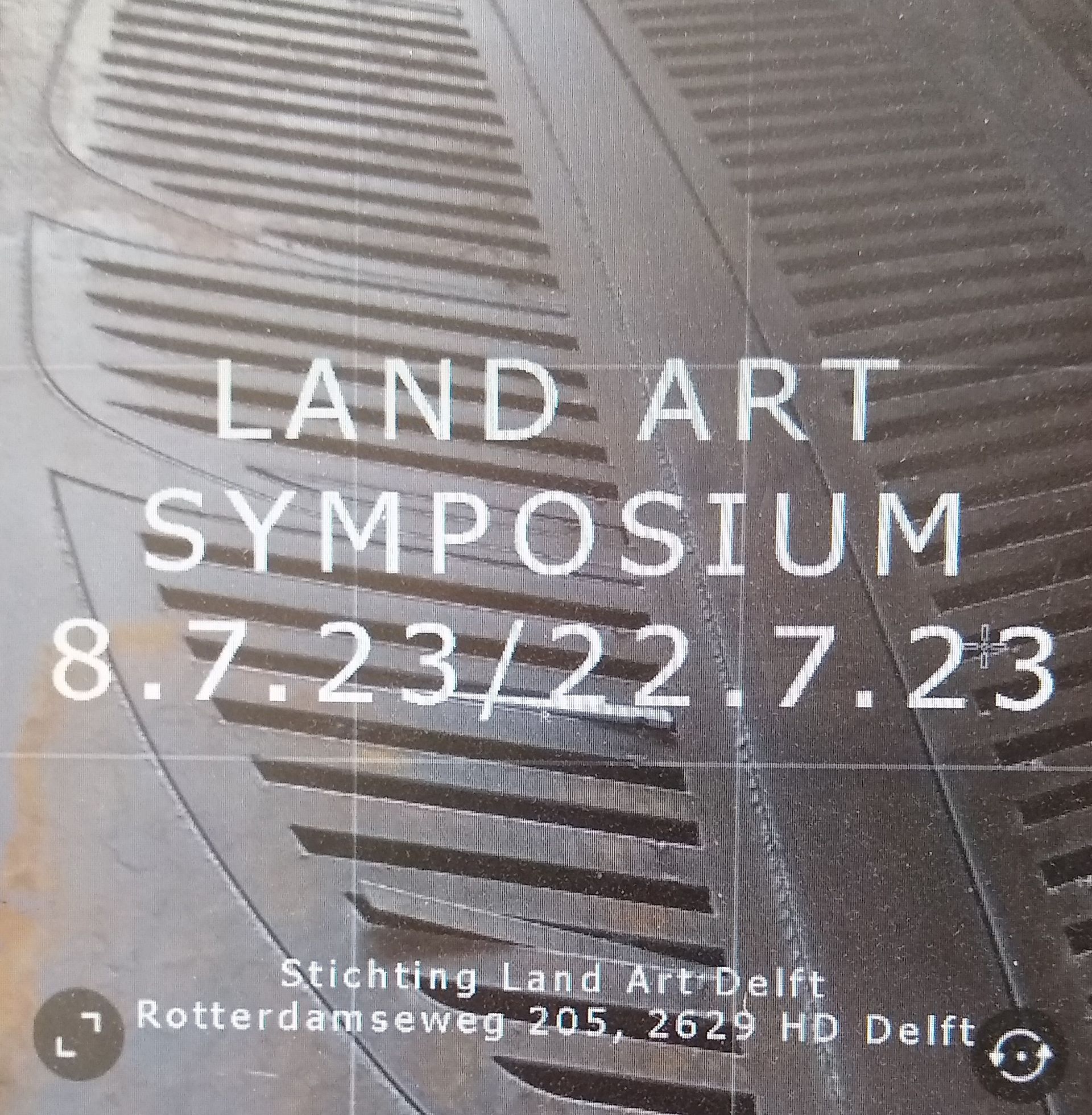
Van 8 t/m 22 juli zal er bij de L.A.D. (foundation Land Art Delft) een symposium plaatsvinden.
Aan de deelnemende kunstenaars werd gevraagd een ontwerp voor een kunstwerk in te dienen als eerbetoon aan wijlen Paula Kouwenhoven, initiatiefnemer en inspirator van de L.A.D., onder de titel “Ode aan Paula Kouwenhoven”.

